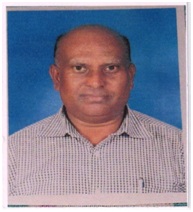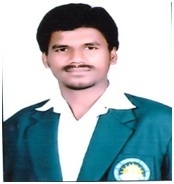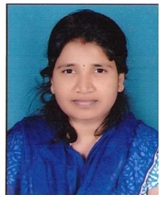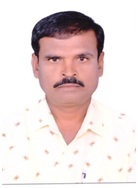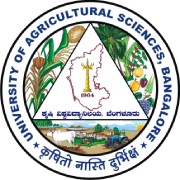| Mandates: Under AICRP, the crop improvement programme at Zonal Agricultural Research Station, Mandya mainly emphasizes on evaluation of the entries suitable for mid-late maturity preferred to be planted during October-November season, to identify suitable early maturing varieties for Jan-Feb planting and isolation of elite clones from fluff of various cross combinations using clones of interest for local adaptability.
The All India Coordinated Research Project on sugarcane has been playing a pivotal role in the development of improved varieties for the zone since 1975. The genetic variability required for meeting the varietal needs is generated through raising large number of recombinants obtained by various crosses involving parents of location specific.
Objectives :
Ø To identify and develop varieties for different planting seasons of the zone.
Ø To develop early maturing and sugar rich varieties in order to make the availability of cane throughout the crushing period for sugar mills.
Ø To identify and develop varieties suitable for special season of planting viz., June- August and other planting seasons of October-November & January -February of the zone.
Ø To develop varieties for resistance to major insect pests and diseases.
Ø To isolate clones suitable for problematic soils.
Ø To reduce the cost of cane production by increasing fertilizer use efficiency.
Ø Conducting of frontline demonstrations to popularize the proven improved technologies among the cane growers. |
| Research Programmes(Crop Improvement and Crop Protection)
v To isolate elite entries under IVT for better adaptability, higher cane and sugar yield –
( IVT trial)’
v Evaluation of sugarcane entries under Advanced varietal trial –I Plant (AVT – I PC)
v Evaluation of sugarcane entries under Advanced varietal trial–II Plant(AVT – II PC )
v To test the entries under Advanced varietal trial – for ratoon performance(AVT – Ratoon)
v Evaluation of elite clones from III clonal stage of fluff 2017, 2018 and 2019 for cane yield and quality(SVT-I)
v Evaluation of elite clones for main planting season (July-August) for cane yield and quality(SVT-II)
v To isolate elite clones from different years of fluff (fluff 2020, 2021 &2022)
v Raising and evaluation of seedlings in the first ground nursery(Fluff 2023)
v To evolve sugarcane varieties suitable for local condition by Hybridization programme.
v Maintenance of genetic purity of existing varieties and their nucleus seed production to augment Breeder seed production.
v To produce quality Breeder Seed Production under National Food Security Mission –Commercial Crop scheme.
v Evaluation of Zonal entries /genotypes for their reaction against major insect pests
v Survey and Surveillance of sugarcane insect pests
v Monitoring of insect pests and bio-agents in sugarcane agro eco-system under changing climate scenario.
v Assessment of yield losses for important regional pests of sugarcane under changing climate scenario. |
| Research Accomplishments :
(Varieties released /Technologies developed / Patents developed/ Commercialized etc…)
a) Sugarcane Breeding
Ø Varieties released by the center for commercial cultivation and their salient characters
| Sl. No |
Varieties |
Year of Release |
Salient Features |
| 1 |
Co 419 |
1956 |
High sugar yield , Good for jaggery making, Tolerance to moisture stress situation , Susceptible form Helminthosporium disease , Good ratooner |
| 2 |
Co 62175 |
1975 |
Resistance to Helminthosporium Disease , Suitable for low laying area and problematic soil , Suitable for wide row planting(5ft), Good ratooner |
| 3 |
B- 37172 |
1977 |
Non flowering variety, Suitable for January –February planting. |
| 4 |
Co 7219 |
1985 |
High yield and Good quality, Resistant to smut |
| 5 |
Co 7804 |
1989 |
Self detrashing ,Better quality ,Good for jaggery making, Sparse and late flowering , High tillering |
| 6 |
Co 8371 |
1999 |
Good quality ,Good ratooner, Drought tolerant, High jaggery yield, Not suitable for water logging situation |
| 7 |
Co 86032 |
2005 |
Better quality, Good for jaggery making, High tillering
Suitable for wide row spacing(5 ft), Sparse and late flowering, Suitable for January – February planting |
| 8 |
CoVC 2003-165 |
2008 |
Completely free from woolly aphid, Drought tolerant, Good ratooner , High tillering variety, Suitable for wide row spacing(5 ft) |
| 9 |
CoVC 99463 |
2011 |
Drought tolerant , High tillering variety, Suitable for wide row spacing (5 ft), High tillering genotype, Good for Jaggery making |
| 10 |
CoVC 14061
(VCF 0517) |
2017 |
High tonnage, Sugar and Jaggery yield, Good tillering variety, Good ratooning potential, Suitable for wider row planting (5 ft), Good for Jaggery making. Moderate drought tolerant.Occupied >80% of sugarcane area in Southern Karnataka |
| 11 |
CoVC 16061 |
2019 |
Early maturing clone (10 months),Suitable for moisture stress situations, Suitable for wider row planting
(5 ft), High tillering variety,Good for Jaggery making. |
| 12 |
CoVC 16062 |
2021 |
Midlate maturing, High tillering variety, Better quality Good for Jaggery making, Better sucrose content, Good ratooner, Drought tolerant ,Suitable for wide row spacing (5 ft) |
| 13 |
CoVC 18061 |
2021 |
Sparse and late flowering variety (10-20%), High tillering potential,Suitable for all the planting seasons (Specially for January- February planting), Good ratooner Good for Jaggery making,Suitable for wide row planting(5 ft). |
Sugarcane clones accepted for ZVT in the workshop
| Sl no |
IVT No. clones
Accepted for ZVT |
Genotypes |
Parentage |
Year |
Proposal accepted during |
| 1 |
CoVC 10061*(YLD
Resistant) |
VCF
0604-04 |
Co 62172 x Co99004 |
2010 |
Workshop of AICRP (Sugarcane), Navasari Agricultural University, Navasari on Oct 27-28, 2010, |
| 2 |
CoVC 14061
|
VCF 0517 |
Co 8371 (GC) |
2014 |
Group meeting of AICRP (Sugarcane), 1st and 2nd November 2014 at IISR Lucknow, U.P. |
| 3 |
CoVC 14062 |
VCF 009-64
|
CoV92103 x 57NG136 |
| 4 |
CoVC 15061 |
VCF 0961-02 |
Co 8371 x CoH110 |
2015 |
Group meeting of AICRP (Sugarcane) held on 15 and 16th of December 2015 at Rajendra Agricultural University Pusa Bihar |
| 5 |
CoVC 15062 |
VCF 0706-05 |
Co 8213 x CoT8201 |
| 6 |
CoVC 15063 |
VCF 0961-05 |
Co 8371 x CoH110 |
| 7 |
CoVC 15064 |
VCF 0734-05 |
Co 95021 x Co86002 |
| 8 |
CoVC 16061(Early) |
VCF10-43-06 |
Co 85002
( PC) |
2016 |
Group meeting of AICRP (Sugarcane) held on 15th to 17th Nov 2016 at Vasantdada sugarcane Institute(VSI), Pune, Maharashtra, |
| 9 |
CoVC 16062 (Midlate) |
VCF
09-61-07 |
Co 8371 x CoH110 |
| 10 |
Co VC 17061 |
VCF
12-22-26
|
Co 86011 x CoT8201 |
2017 |
Group meeting of AICRP (Sugarcane), held on 22nd and 23rd September, 2017 at Sugarcane breeding Institute (SBI), Coimbatore, Tamil Nadu |
| 11 |
CoVC 18061
|
VCF
12-33-24
|
Co 86032 x Co 86011 |
2018 |
32nd Biennial Workshop of AICRP on Sugarcane held on 17th to 18th October, 2018 at UAS, GKVK, Bengaluru, Karnataka |
Ø CoVC clones entered to Advanced Varietal Trial under ZVT programme of AICRP on Sugarcane.
| CoVC clones |
|
AVT -I PC |
AVT II PC & ratoon |
| CoVC 10061 |
: |
2015-16 |
2016-17 |
| CoVC 14062 |
: |
2019-20 |
2020-21 |
| CoVC 17061 |
: |
2022-23 |
2023-24 |
| CoVC 18061 |
: |
2023-24 |
2024-25 |
Ø Developed well advanced tissue cultural laboratory for multiply and to supply genetically pure, disease-free seedlings, so as to maintain the varietal potential for yield & other characters.
Ø Popularizing the adoption of micro-propagated sugarcane plantlets among farmers and sugar industries for higher yields and profitable income.
b) Sugarcane Production Technologies Released :
| Sl. No |
Technology released |
Year of release |
Remarks |
| 1 |
Closer spacing in Sugarcane |
1982 |
Closer spacing (75 cm rows) for early maturing, shy tillering varieties (CoC 671 & KHS 3296 |
| 2 |
Date of planting for Sugarcane |
1982 |
June-July planting is best season followed by Oct-Nov and Jan-Feb |
| 3 |
Weedicide for Sugarcane |
1983 |
Pre-emergent application of Metribuzin (70%) @ 1.0 kg a.i. ha-1 or Atrazine (50%) @ 1.9 kg a.i. ha-1 or Combination of Atrazine + 2,4-D |
| 4 |
Nitrogen use efficiency in Sugarcane |
1984 |
Prilled urea at recommended rate (250 kg N ha-1) Point placement of Urea super granules |
| 5 |
Cropping system in Sugarcane |
1985 |
Sugarcane – cowpea – ragi / paddy |
| 6 |
Validation of Nitrogen dose for Sugarcane |
1985 |
Recommended dose of Nitrogen is sufficient (250 kg N ha-1) |
| 7 |
Integrated Nutrient Management in Sugarcane |
1985 |
Combined application of FYM and Fertilizers |
| 8 |
Water management in Sugarcane |
1985 |
Light and frequent irrigations, Alternate furrow irrigation, Drip irrigation, Trash mulching to avoid evaporation losses |
| 9 |
Inter-cropping of pulses in Sugarcane |
1987 |
French bean, soybean cv Monetta, KB-79 for Intercropping |
| 10 |
Use of Bio-fertilizer in N management in Sugarcane |
1988 |
Azatobacter @ 2.0 kg ha-1 |
| 11 |
Drought management in Sugarcane |
1989 |
Trash mulching |
| 12 |
Weed management in Sugarcane |
1990 |
Pre-emergent application of metribuzine @ 1.0 kg a.i. ha-1 |
| 13 |
Validation of K dose for sugarcane |
1991 |
Response to potassium is only up to 150 kg ha-1 |
| 14 |
Integration of press mud and Azatobacter in Sugarcane |
2002 |
Integrated use of pressmud cake @ 4 t ha-1, Azatobacter @ 5 kg ha-1 with recommended N (250 kg ha-1) |
| 15 |
Nutrient management in Sugarcane |
2002 |
Use of pressmud @ 4 t ha-1 |
| 16 |
Validation of NPK for Sugarcane |
2004 |
100% recommended NPK levels were sufficient |
| 17 |
Nutrient management in Sugarcane |
2009 |
75% nutrients through inorganic and 25% through organic source was ideal to achieve higher cane yield and sucrose percentage. |
| 18 |
Weed management in ratoon cane |
2009 |
Metribuzine at 1 kg ai/ha as pre emergent spray followed by 2,4-D 1 kg ai/ha at 45 DARI was effective in controlling weeds and realizing higher cane yield in ratoon crop. |
| 19 |
Wide row planting in Sugarcane |
2004 |
Comparison of three feet and five feet planting in sugarcane for higher efficiency |
| 20 |
Chemical free Jaggery preparation |
2016 |
Protocol for chemical free jaggery( POP page no. 160-162) |
| 21 |
Sub-surface/Surface drip irrigation in sugarcane |
2018 |
Adoption of sub-surface drip irrigation in sugarcane has improved the cane yield to the extent of 45%. It saves 50% of irrigation water and 44% of electricity consumption.( POP page no. 152-154) |
| 22 |
Precision farming techniques in Sugarcane |
2018 |
Adoption of site specific nutrient management practices based on soil test results found to save 25% of applied fertilizers in Sugarcane and enhanced the yield up to 20%.( POP page no. 149) |
| 23 |
Revalidation of recommended Package of Practices for Nutrient (NPK) requirement in plant and ratoon system in Sugarcane.
|
2022 |
Crop Improvement:
Ø The varieties VCF 0517, CoVC 18061 and Co 62175 were recommended for September and November planting seasons in respect of cane and Sugar yield under plant and Ratoon crops.
Ø CoVC 18061 and Co 86032 were recommended for January planting season based on yield and quality parameters and sparse and late flowering behavior under plant and Ratoon crops.
Ø CoVC 16061 an early duration variety recommended for both early and late crushing period under the plant and Ratoon crops. .
b) Crop Production:
Ø For plant crop sugarcane crop, application of 125 per cent recommended dose of N P2O5 and K2O can be followed with P2O5 and K2O in two equal splits at the time of planting and final earthing up @ 3½ months after planting along with microbial consortia.
Ø For ratoon crop application of recommended dose of 100 per cent N P2O5 and K2O with P2O5 and K2O in two equal split at planting and final earthing up along with microbial consortia can be followed.
Ø Sugarcane can be planted with spacing of 5 feet between rows for the newly released varieties with profuse tillering habit
Ø VCF 0517 and CoVC 18061 and Co 86032 varieties can be planted with wider spacing of 5 feet rows
c) Crop Protection:
I) Entomology
Application of Chlorantroniliprole 0.4 G @ 9 kg/ac at the time of planting followed by final earthing up and application of Fipronil 0.3 G @ 10 kg /ac at the time of planting followed by final earthing up can be recommended for the management of early shoot borer, internode and top shoot borers since they have recorded least infestation along with higher cane yield.
II) Pathology
To manage the leaf spot disease in the susceptible varieties the broad spectrum and long duration fungicide like Azoxystrobin (20% W/V) + Difenoconazole (12.5% W/V) can be used at the rate of 1 ml per liter of water. |
|
c) Crop Protection (Entomology) |
| 01 |
Management of Early shoot borer of Sugarcane |
2017 |
To control Early shoot borer of Sugarcane in an effective way. Granular application of Chlorantraniliprole 0.4G @ 22.5Kg/ha or Fipronil 0.3G @ 25.0 Kg/ha at the time of planting and 60 days after planting found effective in the management of Early Shoot Borer of sugarcane. (POP page no. 156) |
|
|
|
|
|
|
Technologies commercialized.
1. Commercial Production of Micro -propagated Disease-free Sugarcane tissue culture seedlings.
2. Commercialization of chemical free Jaggery Preparation. |

